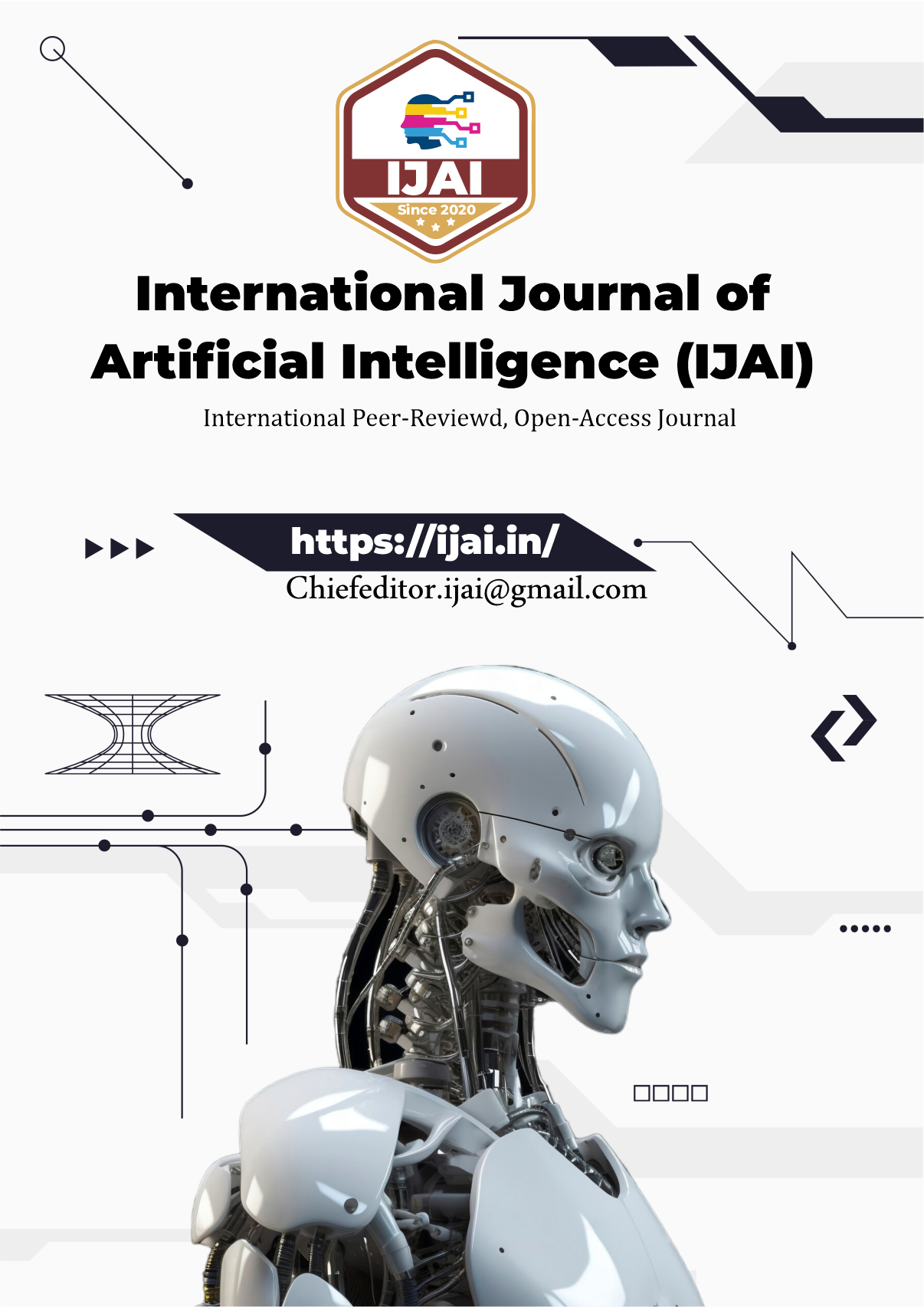AI-POWERED SPEECH EMOTION RECOGNITION FOR PERSONALIZED ASSISTANTS
Keywords:
Speech Emotion Recognition, Personalized Assistants, Deep Learning, Transfer Learning, BERT Models, Synthetic Speech Augmentation, Multimodal Data IntegrationAbstract
The introduction of AI AIpowered speech emotion recognition (SER) acts as a major enabler for the personalized assistants to recognize and understand human emotion to react to them accordingly. The objective of this research is to develop a robust SER (Sentiment Extraction & Representation) model, which uses emerging technologies like (deep learning), (Transfer Learning), and models based on (BERT (Bidirectional Encoder Representations from Transformers)) for the best results. It utilizes the proposed model which is based on multimodal data inputs (e.g. audio features and text based embeddings), to extract common features about complex emotional patterns.
The model performs mental health condition monitoring and causes emotional shift discovery in user interactions by the application of supervised deep recurrent systems. Moreover, the speaker recognition models with transfer learning techniques help the system to generalize to different speech patterns. Synthetic emotional speech augmentation further implements the model to be more resilient to data imbalance and also improves its predictive performance.
The experimental results show that that the system results in state of the art performance across key SER benchmarks with an overall accuracy, precision and recall performance beating conventional models' performance. However, it is anticipated that future emotion aware AI systems will operate on advanced neural architectures that will include proactive causes of emotions and also grow real time adaptive capability to train to the unique version of the individual AI will interact with.
References
HaddadPajouh, Hamed, Raouf Khayami, Ali Dehghantanha, Kim-Kwang Raymond Choo, and Reza M. Parizi. "AI4SAFE-IoT: An AI-powered secure architecture for edge layer of Internet of things." Neural Computing and Applications 32, no. 20 (2020): 16119-16133.
Nagaty, Khaled Ahmed. "IoT commercial and industrial applications and AI-powered IoT." In Frontiers of Quality Electronic Design (QED) AI, IoT and Hardware Security, pp. 465-500. Cham: Springer International Publishing, 2023.
Wang, Bo-Xiang, Jiann-Liang Chen, and Chiao-Lin Yu. "An AI-powered network threat detection system." IEEE Access 10 (2022): 54029-54037.
Gopireddy, Ravindar Reddy. "AI-Powered Security in cloud environments: Enhancing data protection and threat detection." International Journal of Science and Research (IJSR) 10, no. 11 (2021).
S. Padi, S. O. Sadjadi, D. Manocha, and R. D. Sriram, "Multimodal Emotion Recognition Using Transfer Learning from Speaker Recognition and BERT-based Models," arXiv preprint arXiv:2202.08974, Feb. 2022. [Online]. Available: https://arxiv.org/abs/2202.08974
N. Elsayed, Z. ElSayed, N. Asadizanjani, M. Ozer, A. Abdelgawad, and M. Bayoumi, "Speech Emotion Recognition Using Supervised Deep Recurrent System for Mental Health Monitoring," arXiv preprint arXiv:2208.12812, Aug. 2022. [Online]. Available: https://arxiv.org/abs/2208.12812
A. Shahid, S. Latif, and J. Qadir, "Generative Emotional AI for Speech Emotion Recognition: The Case for Synthetic Emotional Speech Augmentation," arXiv preprint arXiv:2301.03751, Jan. 2023. [Online]. Available: https://arxiv.org/abs/2301.03751
S. Siriwardhana, A. Reis, R. Weerasekera, and S. Nanayakkara, "Jointly Fine-Tuning 'BERT-like' Self Supervised Models to Improve Multimodal Speech Emotion Recognition," arXiv preprint arXiv:2008.06682, Aug. 2020. [Online]. Available: https://arxiv.org/abs/2008.06682
Namdar, Juan H., and Janan Farag Yonan. "Revolutionizing IoT Security in the 5G Era with the Rise of AI-Powered Cybersecurity Solutions." Babylonian Journal of Internet of Things 2023 (2023): 85-91.
Bibi, Iram, Adnan Akhunzada, and Neeraj Kumar. "Deep AI-powered cyber threat analysis in IIoT." IEEE Internet of Things Journal 10, no. 9 (2022): 7749-7760.








